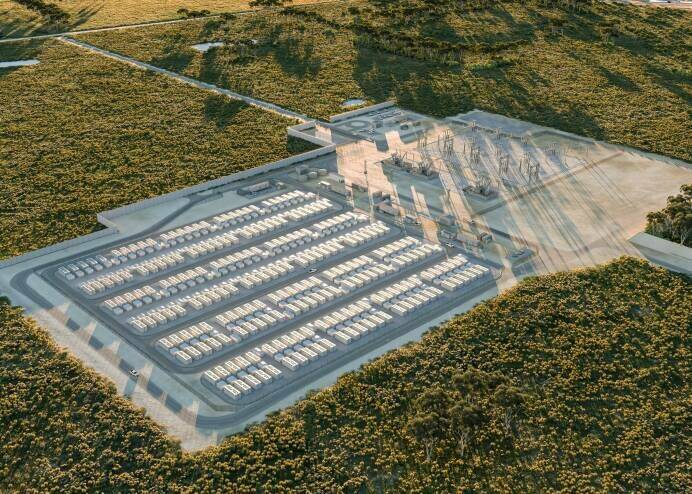Commissioning Begins on 1.6GWh Melbourne Renewable Energy Hub Battery Energy Storage System in Australia

Introduction
The commissioning phase has commenced for the Melbourne Renewable Energy Hub (MREH) Battery Energy Storage System (BESS) located in Victoria, Australia. This project represents a significant advancement in renewable energy infrastructure, contributing to sustainable development and energy transition goals.
Project Overview
- Capacity: 1.6 gigawatt-hours (GWh)
- Location: Victoria, Australia
- Type: Battery Energy Storage System (BESS)
Alignment with Sustainable Development Goals (SDGs)
The MREH BESS project directly supports multiple United Nations Sustainable Development Goals, including:
- SDG 7: Affordable and Clean Energy
- By integrating large-scale battery storage, the project enhances the reliability and accessibility of renewable energy sources.
- Supports the transition from fossil fuels to clean energy, reducing greenhouse gas emissions.
- SDG 9: Industry, Innovation, and Infrastructure
- Promotes innovation in energy storage technologies.
- Strengthens resilient infrastructure to support sustainable industrialization.
- SDG 13: Climate Action
- Contributes to climate change mitigation by enabling higher penetration of renewable energy.
- Supports Australia’s commitments to reduce carbon emissions.
- SDG 11: Sustainable Cities and Communities
- Enhances energy security and sustainability for urban and regional communities in Victoria.
Significance of the MREH BESS Project
- Represents one of the largest battery storage projects in Australia, setting a benchmark for future renewable energy initiatives.
- Facilitates grid stability and energy supply balancing, essential for integrating variable renewable energy sources such as solar and wind.
- Supports economic growth by creating jobs and fostering technological development in the renewable energy sector.
Conclusion
The commissioning of the 1.6GWh Melbourne Renewable Energy Hub BESS marks a pivotal step toward achieving sustainable energy systems in Australia. By advancing clean energy infrastructure, the project exemplifies commitment to the Sustainable Development Goals, particularly in promoting affordable, reliable, and sustainable energy solutions while addressing climate change and fostering innovation.
1. Sustainable Development Goals (SDGs) Addressed or Connected
- SDG 7: Affordable and Clean Energy
- The article discusses the commissioning of a 1.6GWh Battery Energy Storage System (BESS) at the Melbourne Renewable Energy Hub (MREH), which supports renewable energy integration and clean energy storage.
- SDG 13: Climate Action
- The deployment of large-scale renewable energy storage contributes to reducing greenhouse gas emissions and mitigating climate change impacts.
- SDG 9: Industry, Innovation, and Infrastructure
- The article highlights technological innovation in energy infrastructure through the development of a large-scale BESS.
2. Specific Targets Under Those SDGs Identified
- SDG 7 Targets
- Target 7.2: Increase substantially the share of renewable energy in the global energy mix.
- Target 7.3: Double the global rate of improvement in energy efficiency.
- SDG 13 Targets
- Target 13.1: Strengthen resilience and adaptive capacity to climate-related hazards and natural disasters.
- Target 13.2: Integrate climate change measures into national policies, strategies, and planning.
- SDG 9 Targets
- Target 9.4: Upgrade infrastructure and retrofit industries to make them sustainable, with increased resource-use efficiency and greater adoption of clean and environmentally sound technologies.
3. Indicators Mentioned or Implied to Measure Progress
- SDG 7 Indicators
- Indicator 7.2.1: Renewable energy share in the total final energy consumption.
- Indicator 7.3.1: Energy intensity measured in terms of primary energy and GDP.
- The article implies measurement of energy storage capacity (1.6GWh) as a metric supporting renewable energy integration.
- SDG 13 Indicators
- Indicator 13.1.1: Number of deaths, missing persons and directly affected persons attributed to disasters per 100,000 population.
- While not explicitly mentioned, the article implies contribution to climate mitigation through clean energy storage.
- SDG 9 Indicators
- Indicator 9.4.1: CO2 emission per unit of value added.
- Indicator 9.4.2: Proportion of industries using clean and environmentally sound technologies.
- The article implies progress through deployment of advanced energy storage infrastructure.
4. Table of SDGs, Targets, and Indicators
| SDGs | Targets | Indicators |
|---|---|---|
| SDG 7: Affordable and Clean Energy |
|
|
| SDG 13: Climate Action |
|
|
| SDG 9: Industry, Innovation, and Infrastructure |
|
|
Source: energy-storage.news







